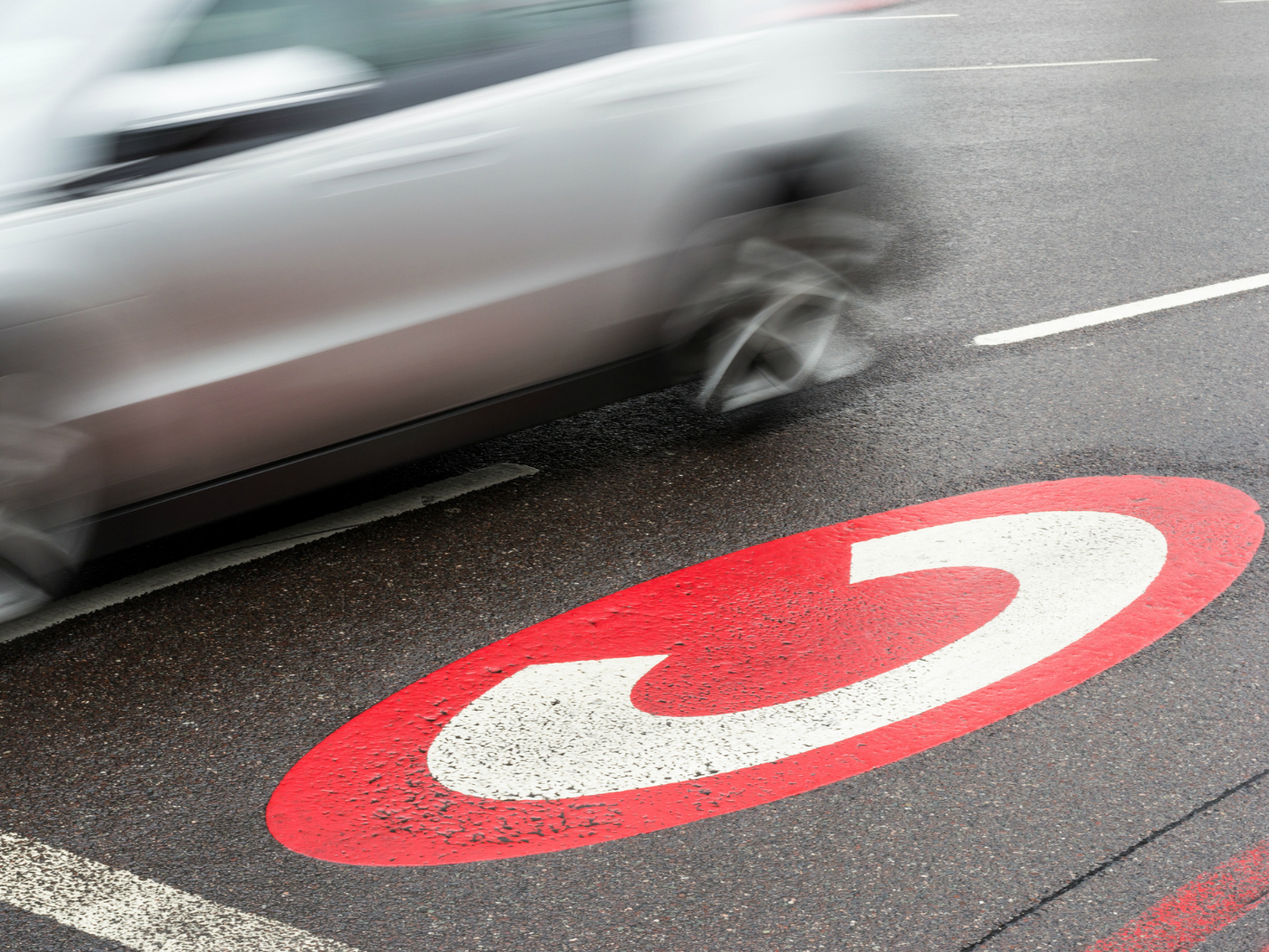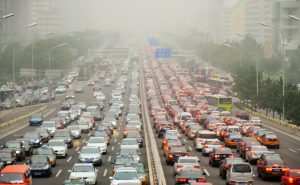When London mayor Ken Livingstone introduced congestion charging to the British capital in February 2003, his arguments for it were economic. “Red Ken”, as he’d become known for his left-wing politics, was concerned that traffic jams were bad for capitalism.
His aims were to reduce valuable time lost as a result of traffic jams and create a more hospitable atmosphere for pedestrians – shoppers, workers and visitors – by relieving motorists of £5 (48 yuan) each time they entered a central charging zone covering the Square Mile financial district and the West End shopping and tourist areas.
Despite dire predictions, in terms of reducing traffic, the system worked in the early years of its operation.
Livingstone joked that he’d got the idea from Milton Friedman, the “Chicago School” free market economist admired by Margaret Thatcher.
In 2007 he doubled the size of the charging zone by adding a western extension (the WEZ). But when he went into his third election campaign the following year, his congestion charge case had also become environmental.
Livingstone had plans to slap an extra high charge on “gas guzzlers” – high-powered private vehicles with high fuel consumption and carbon dioxide (CO2) emissions. By contrast, cars with the lowest CO2 output might be exempt from the charge completely.
Alas for Livingstone, he lost the 2008 mayoral election. His successor, Boris Johnson dumped the gas-guzzler plan, abolished the WEZ and, alas for London, will leave both the capital’s air quality and its congestion levels in an unhealthy state when he steps down as mayor in May.
Last year, a study conducted for him and the capital’s transport body Transport for London (TfL) by King’s College researchers suggested that nearly 9,500 Londoners a year now die early from air pollution, mainly due to a rise in victims of nitrogen dioxide (NO2) belched out by diesel vehicles. Meanwhile, road congestion is hitting record levels.
Critics of Johnson’s environmental record have tied the issues of pollution and congestion together and point the finger of blame squarely at the London mayor, who is expected to bid for leadership of the Conservative Party before the next general election in 2020.
They may have a point. Yet London’s experience shows that the relationship between congestion charging and environmental ills is not straightforward.
Johnson had argued that Livingstone’s anti-gas-guzzler plan would have made only a marginal difference to carbon emissions, for example. Idiosyncratically, he compared the additional CO2 produced by what he called “family cars” to be equivalent to that blown out by a herd of cows tramping through the West End.
Meanwhile, TfL’s annual assessments of the charge’s effects have taken a cautious view of the charge’s effects on air quality
In 2003, TFL’s first annual assessment of its impacts as a whole anticipated only “minimal” effects on visual, noise or atmospheric pollution within the charging zone and noted some concern that pollution might increase around its boundaries.
The sixth and final annual report, published in July 2008, said that a reduced volume of traffic circulating more efficiently in the charging zone had directly produced an estimated 8% reduction in oxides of nitrogen (NOx), a 7% fall in fine particulate matter (PM10) and a 16% drop in CO2 emissions.
However, the reductions were said to have diminished because congestion levels had begun to rise again.
The report also said that overall air quality trends had “continued to primarily reflect the diversity and dominance of external factors” and as such “did not allow the identification of a clear ‘congestion charging effect.’”
Later studies found that congestion charging had probably been beneficial to health but concluded, in the words of an academic from the London School of Hygiene and Tropical Medicine, that its impact on air pollution and life expectancy had been “modest”.
In fact, transport-related air pollution, blamed for about half the total amount, were already addressed more directly through other initiatives aimed at road-users.
In February 2008, Livingstone had introduced the Low Emission Zone (LEZ) which covered almost the whole of Greater London, an area of around 600 square miles, rather than just the centre of the city and unlike the congestion charge, operated 24 hours a day, seven days a week.
It sought to cut the amount of particulates – tiny particles of soot harmful to the lungs – churned out from the exhausts of heavy commercial diesel vehicles, and to help the mayor meet European Union air quality targets, for which London was falling short.
Aimed initially at lorries, coaches, minibuses and large vans, it charged registered vehicles that didn’t meet the required standard £200 a day, and fined drivers of unregistered ones £1000.
The LEZ was retained by Johnson and he tightened the regulations soon after his election to include more types of vehicle. He exasperated campaigners and opponents by initially delaying a third phase on the grounds that it would hit small business people using small vans at a time of economic recession, but then took a U-turn to avoid an EU fine.
Pollution spikes
And yet, despite the LEZ, London’s air quality continues to cause grave concern. Levels in some hotspots are double or treble permitted EU levels in recent years. According to measurements made in some of London’s monitoring points, NO2 limits for the whole of 2016 were exceeded within the year’s first eight days.
At the risk of hyperbole, Simon Birkett of the Clean Air in London campaign has called diesel exhaust “the biggest public health catastrophe since the Black Death.”
Johnson has defended his record on air quality, describing London as a trailblazer on the issue. He has increased the number of low emission buses in London’s 8,600-strong fleet to around 1,500 and points to a new Ultra Low Emission Zone (ULEZ) currently scheduled to come into force in September 2020.
This will require all vehicles travelling in the congestion charge zone to conform to new, higher EU standards. Johnson’s plan also includes financial encouragement for more drivers of London’s famous black taxi cabs to undergo a green upgrade and get away from diesel.
Mayoral candidates
Too little, too late, say Johnson’s critics, who include the Labour Party’s Sadiq Khan, the frontrunner to become mayor after May’s election .
Khan’s manifesto promises to consult on bringing the ULEZ forward and expanding it. His main rival, Johnson’s fellow Conservative Zac Goldsmith, a noted fan of electric vehicles, has promised only to “back” the ULEZ. Goldsmith, a former editor of the Ecologist Magazine, has also stated his support for “tougher rules for heavy goods vehicles and vans.” But these are not yet specified in his manifesto.
Significantly, neither is pledging to either increase the congestion charge – which is now roughly double what it was initially – or enlarge the charging zone. That is an indication of how politicians continue to fear the displeasure of motorists, even though car ownership in London has been falling. That concern also informs steps to penalise or restrict dirty vehicles. It’s a prickly problem that London’s politicians will have to grasp.
Political will
At an air quality conference held by the capital’s 33 local authorities in 2014, two basic remedies were underlined: switching from diesel to clean fuel, which included petrol; and reducing vehicle weights and speeds to lessen particulates caused by road surface friction.
A map was produced showing the difference in air quality in two of London’s most famous shopping streets on the same day. In Oxford Street, it was filthy. In neighbouring Regent Street it was strikingly cleaner. The reason was that Regent Street had been closed to traffic for the day.
The lesson from London appears to be that radically lessening air pollution requires motorised road traffic to be slower, lighter, smoother and cleaner. Congestion charging can help with that, but really serious progress requires a great deal more – and the political will to supply it.





![Hilsa fish at a market in Barisal, Bangladesh [image by Finn Thilsted]](https://dialogue.earth/content/uploads/2016/04/Hilsa-fish-bangladesh-pic-300x199.jpg)


